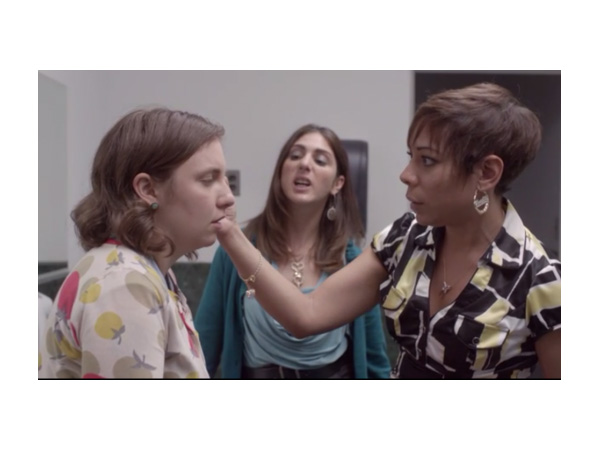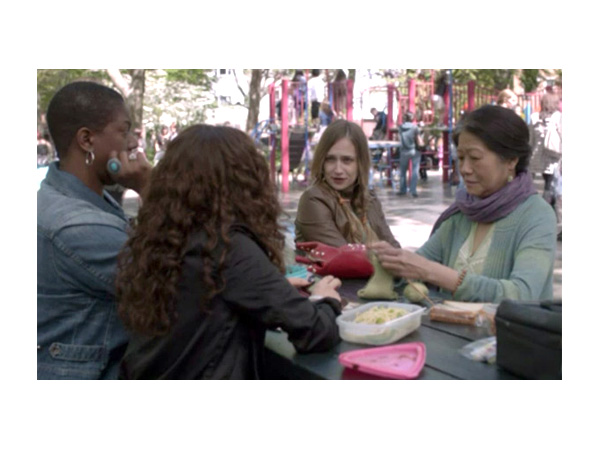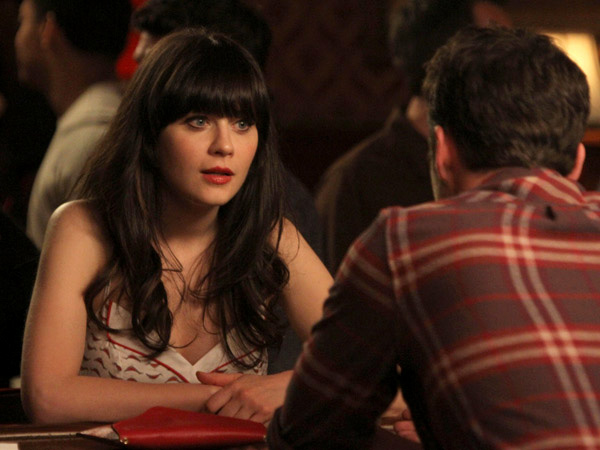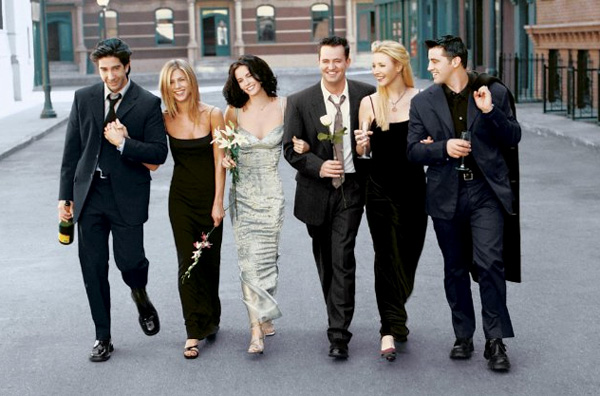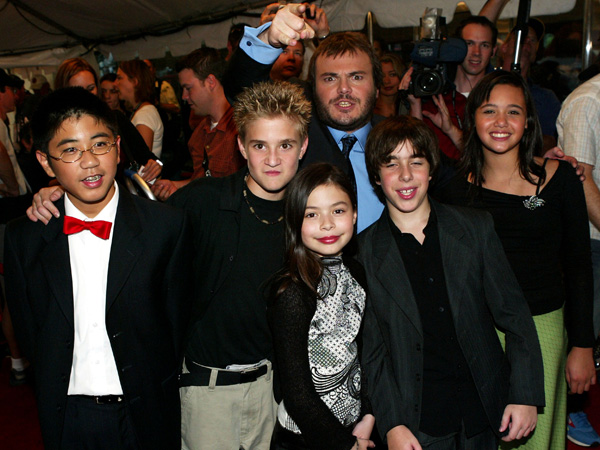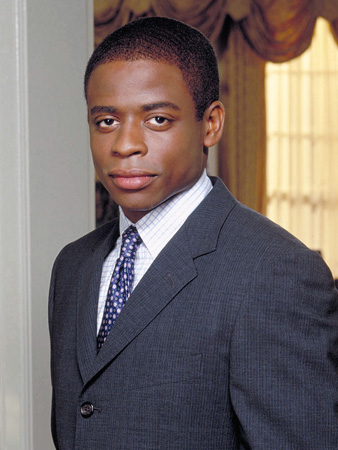Please Submit All Ethnicities
The tricky business of writing casting notices.
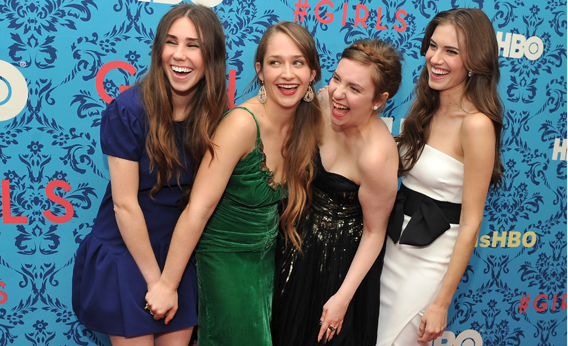
Photo by Stephen Lovekin/Getty Images.
Of the many gifts the HBO series Girls has given America—hilariously authentic sex scenes, instructive fashion ensembles, shirtless Adam Driver—the greatest may be the serious conversation it sparked about the issue of on-screen diversity, a conversation whose staying power has been surprising and gratifying.
From the earliest rumblings about the show’s overwhelming whiteness to the widely circulated news that Community’s Donald Glover (who is black) had been spotted filming scenes for the second season, each new development has been an opportunity to ponder the big questions surrounding the issue of casting and color. Questions like: What’s the difference between legitimate diversity and crass tokenism? And what’s more important, artistic freedom or social responsibility?
During the most heated period of discussion about the show’s “diversity problem,” a pair of Girls casting notices from 2011 hit the Web and seemed to offer some clues about the show’s approach to its ethnic characters. One notice sought a “pleasantly plump” Latina co-worker, Chastity, for Hannah; a rainbow group of nannies with accents (including a “sexy” El Salvadoran and an “overweight” African American with a “good sense of humor”); and a “VERY VERY HANDSOME AND VERY SEXY” African-American lover for Jessa. The other notice advertised roles including an Asian sake bar waiter; Tako, a “tough, tiny” African-American lesbian; and a female junkie, for which agents were asked to “PLEASE SUBMIT ALL ETHNICITIES,” leading Jezebel writer Cassie Murdoch to quip, “Ooh, the junkie can be any ethnicity! How progressive.” (The junkie was ultimately played by a white actor.)
Commenters noted that most of the parts being advertised were very small ones. Kendra James, who published the first notice on Racialicious, wrote that “Girls, set in Brooklyn, where only one-third of the population is white, somehow exists in a New York where minorities are only called to cast for one-liners and nanny roles.” On Jezebel, Dodai Stewart pointed out that fat, sassy black women and sexy Latinas are hoary old TV stereotypes, hardly in keeping with the rest of the show’s zeitgeisty freshness. The posting of an open casting call in May for “hipster types” of “all ethnicities” to play background roles was met with a mix of cautious optimism (at least they’re trying) and eye-rolls (only extras?).
This wasn’t the first time a casting document has become tangled up in the fraught, ongoing debate over how pop culture gets its color. When the creators of The Hunger Games announced they were seeking a Caucasian girl to play the lead role of Katniss—despite her being described in Suzanne Collins’ novel as having olive skin and black hair—many fans cried whitewashing. When notices for M. Night Shyamalan’s The Last Airbender specified that its four leads could be “Caucasian or any other ethnicity,” critics noted that the phrasing—intentional or not—made the casting process sound a bit like Orwell’s farm, where “some animals are more equal than others.” Long before 2 Broke Girls premiered and came under fire for its broadly stereotypical supporting characters, bloggers noted that early audition scripts described the girls’ Korean boss as a man who wears his pants “belted up way too high on his torso” and has a poor grasp of English. And in the same week that the Girls notices were published, Acura was getting raked over the coals for an audition notice that described the “African-American Car Dealer” they wanted to appear opposite Jerry Seinfeld in a Super Bowl ad as “Nice Looking, friendly. Not too dark.”
Of course, casting notices—also known in the industry as breakdowns—can only reveal so much about the decisions that go on behind the scenes on a film or TV project. Like any job listing, they’re a starting point. Brian Herrera, a Princeton professor who’s working on a scholarly history of casting, points out that there are so many factors that go into any casting decision—who you can afford, who’s available, who looks good next to that other person you’ve already hired—that it can be hard to pin down exactly how Hollywood gets from Point A (a script) to Point B (the people flickering on your screen), especially when so much of the decision-making happens behind closed doors. But in a breakdown, the filmmakers’ and producers’ initial wishes for the role are on display—and put into words. What can these documents tell us about the state of on-screen diversity and the way writers, casting directors, agents, and actors think about race?
The vast majority of breakdowns for films and television series flow through a network called Breakdown Services—about 98 percent of such listings, according to the company. Breakdown Services has been distributing descriptions of open roles to talent agents since the 1970s, when the process involved visiting casting directors’ offices, reading scripts that had been left out in the lobby, and compiling a document to be circulated by overnight courier. The entire process has since gone online. Casting directors can send in their breakdowns, and Breakdown Services will then review and post the document, a process that includes assigning an ethnic category to each role. Talent agents view the listings in the company’s database and submit client materials that seem to fit the bill. Most breakdowns are only available to talent agents and the occasional manager to prevent casting offices from being flooded with the headshots and resumes of the unwashed, unrepresented masses. (Generally speaking, breakdowns play a more crucial role in the casting of episodic television shows—a process that happens much more quickly than it does for films and thus requires a speedier collection of submissions.)
About half the listings released by Breakdown Services are prepared by its own staffers, with a signoff from the project’s casting director; the other half are provided by the casting directors themselves. Thom Goff, Breakdown Services’ East Coast director of operations, stresses that the descriptors his team puts into the breakdowns, whether they’re personality quirks or ethnic designations, are either taken straight from the script or requested specifically by the creative team. (When writing the pilot script for Grey’s Anatomy, the show that has become the gold standard for diverse casting, showrunner Shonda Rhimes—who recently kicked up dust over the lack of performers of color in the new ABC Family show Bunheads—pointedly avoided specifying her characters’ ethnicities, going so far as to leave off last names to help ensure the casting process would be a truly open one.)
While role descriptions ultimately belong to the casting directors and creative team, Breakdown Services will step in if they feel the language is derogatory or doesn’t meet its professional standards. “We tend not to say things like, ‘this midget,’ ” Goff says. “We would say, ‘this little person,’ because that’s the approved terminology.” In the past, Goff would sometimes see a single breakdown refer to “upper- or middle-class characters” as “African-American” and then go on to describe “lower-class or thug” characters as “black”—a linguistic tic that he says Breakdown Services put a stop to.
Beyond political correctness, though, there are legal issues to consider when you’re an industry that regularly makes race a factor in hiring decisions. To stay on the right side of antidiscrimination laws—not to mention the collective bargaining agreements between SAG-AFTRA, the actors’ union, and TV and film producers—breakdowns have to be careful to focus not on who the actor is, but who the character is. (Typically, a breakdown begins with the character’s name and then lists any age, gender, or ethnic designations before filling in more details about the character’s personality or plotlines. See some examples here.)
But what about the decision to make a character white, black, or Asian? Is that a discriminatory act?
Possibly. In a 2006 study on casting notices and Title VII (the federal antidiscrimination employment statute), Berkeley Law professor Russell Robinson argues that the First Amendment likely protects the rights of directors and producers to take race into consideration when it’s integral to the narrative—say, if you’re casting a real-life historical figure. However, the decision to make a character one ethnicity or another is often based on less clearly protected factors—like a fear that “mainstream” audiences won’t buy tickets to a film starring actors of color or the belief that only white characters can serve as audience stand-ins. (Robinson’s theories about how Title VII applies to ethnically specific casting notices have yet to be tested in the courts; the recent high-profile lawsuit against the producers of The Bachelor is based on a different law, one having to do with discrimination in contracts.)
Robinson’s analysis of three months’ worth of film breakdowns found that Caucasian roles made up 22.5 percent of advertised openings. The next largest category of ethnic-specific roles was designated African-American (8.1 percent). The smallest category was made up of Native American characters (0.5 percent).
The largest group of roles in Robinson’s sample—46.5 percent—included no ethnic designation at all. According to most of his sources, a role with no ethnic designation would be implicitly understood by talent agents and actors to be Caucasian—meaning that, in Robinson’s final tally, 69 percent of open film roles were presumed to be reserved for white actors. (Breakdown Services has rejected Robinson’s analysis, saying they don’t know where he got the breakdowns he was reading.)
Larry Williams, founder of Williams Talent Agency, which specializes in representing African-American and minority performers, says Robinson’s interpretation tracks with his experience: Usually, he finds that a role with no ethnic designation ultimately goes to a Caucasian actor. (Meanwhile, he’s found that roles bearing a disclaimer like “submit all ethnicities” go to Caucasian actors about 60 percent of the time.)
But others in the industry dispute the claim that a breakdown with no racial designation is tacitly seeking Caucasian actors. According to Adam Moore, diversity director of SAG-AFTRA, it was “absolutely” the case in the past that a role description that gave a character type without an ethnic designation “meant Caucasian for sure, and unless it said ‘African-American judge’ or whatever, you wouldn’t apply for that,” he says. “But I think we’ve moved away from that. It feels unfortunate that actors and agents still feel that way, because from the casting community, that is not what they mean. They are looking for that diversity; they are actively seeking it out more and more, because that’s what employers want.”
Helen Geier, a casting director who has worked on both films and television shows, adds another wrinkle. Sometimes, she says, the producers on a project will specify that a role should be Caucasian—but the casting director will deliberately stay mum on the ethnicity question in the breakdown just to see who comes in. Maybe there’ll be a chance to show the producers and director something they didn’t know they wanted.
Geier also says that, while there’s really no set way to write a breakdown—and thus no “code” to crack—if she wants to see actors from all across the spectrum, including white performers, she’ll usually forgo any ethnic designation. If she wants to see actors of color, specifically, she’ll add a tag line like “Open to all ethnicities.”
Gary Marsh, who founded Breakdown Services, warns that overanalyzing these documents can be a dicey proposition. “A lot of people think that it’s some kind of biblical pronouncement, but it’s not—the breakdown goes out and that’s what it is, and 10 minutes later it’s different,” he told me.
But for the gigging actors I spoke to, the ability to read between the lines of a breakdown is a skill you start to cultivate, just like learning how to prepare for an audition or what makes a headshot stand out.
“If it says ‘sassy best friend,’ then I’ll think, ‘Oh, they don’t know what ethnicity they want, but they want ethnic,” said one Korean-American actress, who, like some of the other actors quoted here, wished to remain unnamed to avoid upsetting agents or casting directors. “Or it’ll say things like ‘tough girl,’ and I’ll think, ‘Oh, they probably want black.’ ” She knows the part is for an Asian girl if it says something like, “shy but really ambitious.”
“I think there’s a lot of linguistic beating around the bush when casting tries to get specific about what they want ethnically,” said one mixed-race African-American actor. “If they want an extremely urban, thuggish black man, they’re not going to say, ‘We want a ghetto black man. We need a gangster.’ They’ll tiptoe around it and say, ‘Black man, leader of underground crime ring, extremely menacing and dangerous.’ ” (He sees the same linguistic dance around stereotypical Caucasian roles, too—for “rednecks” and “extreme racists.”)
Several actors, as well as other people across the industry, mentioned that they were increasingly seeing terms like “mixed race” or “ethnically ambiguous” in breakdowns. Opinions differed on whether this was a progressive trend—a reflection of American’s increasingly mixed-race nature—or a way of checking off the “ethnic” box without having to saddle your production with any specific cultural baggage.
I recently paid a visit to the Los Angeles headquarters of Breakdown Services, which occupies several floors of a narrow stone and glass building on a quiet side street off a busy highway. I met with founder Gary Marsh in his spacious executive office, and along with staff writer Lynne Kadish, we discussed a breakdown for the upcoming ABC series Nashville, which described a male role as being “Caucasian or mixed ethnicity.” I said that, to me, that seemed like a way of opening the door for an actor who was ethnic but not too ethnic. Kadish suggested the phrase “mixed ethnicity” was meant as a kind of euphemism for “exotic”—but one that didn’t carry the same connotation of sensuality or physical attractiveness. But “we don’t know what anyone means by ‘mixed,’ ” she admitted. As Marsh walked me through the breakdown database, we saw that most of the actors submitted for the role were white, though there were a number of ethnic actors as well. Nearly all of the actors the casting team had marked as potentials in Breakdown Services’ database were Caucasian.
Marsh stressed that talent agents’ experiences and expectations shape the casting process as much as the breakdown does. He showed me a notice for the part of an emergency room nurse with one line on the FX series Sons of Anarchy. Some 1,800 performers had been submitted across a wide range of races and ages. And yet, even though the breakdown didn’t say anything about the character’s gender, most of the actors submitted were female—reflecting the popular belief that nursing is a woman’s profession.
A couple of actors I spoke to singled out another breakdown code word they frequently find themselves having to negotiate these days: “all-American.” “I think everyone understands what they’re trying to get at when they say that,” said Alfredo Narciso, a Brazilian-Filipino actor who primarily goes out for Latino roles. “They’re looking for that Midwestern type, blond-haired, blue-eyed, somebody who looks like they were born and bred in Iowa. And the funny thing about that is I was born in Wisconsin—born and bred. But I would never be considered for that. I would never be called in for that. Even if I was submitted for it, even if I was pushed for it.”
When I raised the actors’ concerns with Thom Goff of Breakdown Services, he denied that the phrase had a racial connotation. Yes, it calls to mind an image, he said, but one of wholesomeness, not whiteness. He pointed to the multicultural cast of Glee as an example of the new all-Americanness. “If that phrase evokes blond hair and blue eyes, then you need to update your own image,” he said.
The difference between Goff’s notion that actors were pigeonholing themselves and the actors’ feeling that they were being shut out of a category of roles speaks to the complexity inherent in the process. Casting is ultimately about taking something relatively abstract (a role) and turning it into something concrete (an actual person). Filmed stories need faces. As many people said to me, casting is an imaginative process that’s shaped by the preconceptions and personal experiences of everyone involved: producers, agents, and indeed the actors themselves. And in Hollywood—as in the rest of the world—sometimes the image in your head doesn’t match the one in mine.
